Do your students’ disruptive behaviors wear you out? Do you ever find yourself wishing you could just TEACH instead of constantly manage behavior?
If so, this post is for you (and you’re in good company)! I’ve heard of so many teachers completely quitting the profession because they were worn out from dealing with behavior issues.
And I sure don’t blame them. Handling challenging behaviors can be truly exhausting. I’ve certainly had some rough years…including some mornings where I sat in my car, not wanting to get out, just dreading what the day might bring!
There are always some extreme situations (I’ve been there), but generally speaking, using effective classroom management practices really helps create a positive, well-functioning classroom. And that’s what this post is all about!
In this post, I’ll share the 4 principles I “live” by when it comes to classroom management. I’m also SUPER excited to share tips from two different Learning At The Primary Pond blog readers and teachers—Carly and Deanna!
It truly takes a village! I hope all these strategies are helpful to you!
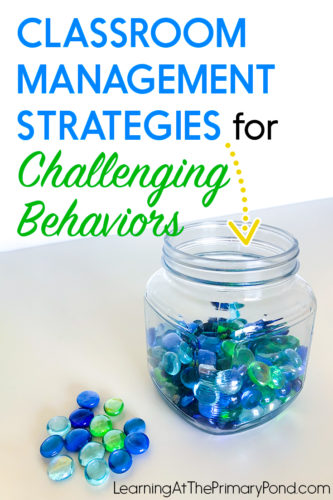
Let’s start with my personal top 4 principles for classroom management. These principles guide everything I do in the classroom! (Although if I’m working with a student who has special needs, I may have to modify my normal routine in order to accommodate the child.)
#1: Be loving yet firm.
You can create the most positive, welcoming classroom environment ever — but still refuse to tolerate disrespectful, unkind, and dangerous behavior.
From the beginning of the school year, I want my students to:
- Celebrate each other, and
- Treat each other with kindness
I work hard to model kindness, point out students’ strengths and good behavior, and just generally create a positive place for kids to be all day. (I work especially hard at this at the beginning of the school year!!)
However, if a child does or says something unkind, my immediate response is to firmly say something like this: “We do not treat people that way. Saying _______ can make other people feel _____. How can we fix this?”
As the year goes on, we have more in-depth conversations about feelings surrounding conflicts. But at the beginning of the year, I feel that I need to quickly “nip things in the bud” and firmly send the message that our classroom is not a place where we treat others badly.
Same thing when it comes to dangerous behaviors: I address those behaviors immediately and follow up with a consequence. Principle #2 has more details about that!
#2: Be clear, consistent, and follow through.
After you and your students agree upon your classroom rules and expectations, be consistent about enforcing them. It’s not a good idea to let something slide because it’s Friday…or because you’re tired. (Especially not at the beginning of the school year!)
Your students need to learn that they are going to be held to a high standard. You don’t have to expect perfection or constantly punish kids. But once your students learn that you mean business, they will take the rules and expectations more seriously!
For example, let’s say you have a special activity planned that involves modeling clay. Be clear by stating the expectations up front about how students should use the clay. Also, state any consequences for not using the clay appropriately (i.e., having to take a time-out from the activity and do something else instead). Then, follow through. For example, if a student is throwing clay or intentionally dropping it on the floor, immediately have him/her stop using the clay—at least for a little while. If another student makes the same mistake, give them the same consequence (consistency).
Principle #2 basically comes down to this: say what you mean, and mean what you say!
#3: Maintain a “spirit of teaching.”
Just like I don’t get upset if my first graders can’t read yet at the beginning of the school year, I don’t get upset if my students don’t always behave appropriately.
You may not have a curriculum or standards for behavior, but teaching behavior is an important part of being a teacher!
If you spend lots of time teaching expectations at the beginning of the year (and really focus on Principles #1 and 2), the amount of behavior-teaching you have to do should decrease as the year goes on. However, that doesn’t mean you won’t have to revisit expectations…and sometimes frequently!
#4: Keep it fun!
Classroom management can be fun for everyone!!
Sometimes when my kiddos are talking too loudly, I’ll start singing a song they know. This is more effective than trying to talk over them or get their attention—and it’s fun!
I also like to involve the kids in working together to meet behavior goals. I keep a jar and add marbles to it whenever I see the entire group behaving positively. (I also explain WHY I’m adding marbles to the jar.) For example, if a specials teacher gives them a compliment, I might add marbles to the jar. Or if students are on-task and working quietly during centers, I might add marbles to the jar.
Sometimes I take marbles out of the jar (and also explain why I’m doing it).
When the jar is full, we enjoy some kind of celebration or special treat!
Those were my 4 principles! Now let’s hear from two awesome teachers and blog readers!
Carly’s Tips
Hey there, teacher friends!
My name is Carly Kleckner and I am a kindergarten teacher in a mid-sized district in Pennsylvania. Last year, I embarked on a journey of learning more about working with students that exhibit challenging behaviors in the classroom, and I’d love to take a few minutes to share some of what I learned. Hopefully, you will find something that you can use to help ease some difficulties in the classroom in the upcoming year.
Working on challenging behaviors begins with connection.
One of the most memorable things that I learned from a professor in college was to “make every student think he or she is your favorite student.” Now, this is not the same thing as picking favorites. It means that we need to treat all students with kindness, be patient, and show interest in each student in the classroom. We must know our students and tailor problem-solving to their interests. In my classroom this year, I used Pokemon as a connection point with one of my most challenging students. He responded when he saw that I was interested in him and his interests.
Challenging behaviors are not personal attacks on us as teachers.
Yes, you read that right. Students that exhibit challenging behaviors are not intending to make our lives miserable as teachers. One of my favorite voices in the field of behavior management is Dayna Abraham from lemonlimeadventures.com because she helped me see that “Behavior is always communication.” When a student is throwing a fit, yelling, or talking back, they are telling you that something is going on. The problem is that they haven’t learned to communicate what is wrong, so they act out as a result. One of the best ways that you can respond to challenging behavior is by taking time to empathize with the student and demonstrate appropriate forms of communication.
Behavior deficits are no different than academic deficits.
Academic deficits are often seen in a different way than behavior deficits because of the way challenging behaviors often feel like personal attacks. Greene (2014) explains that students who demonstrate challenging behaviors are lacking the necessary skills to behave differently. Greene also provides information about identifying lacking skills on his website at livesinthebalance.com. The key to working on challenging behaviors involves identifying these areas of need and working skill instruction into the curriculum. I utilized a social skills curriculum from West (n.d.) to help build some of these necessary skills with my students last year.
Plan for your response to challenging behaviors the same way you plan for other aspects of your day.
When we try to take challenging behaviors as they come, we end up keeping our fingers crossed that we will have a good day. Instead, make a plan for how you will deal with challenging behaviors. Abraham suggests having one phrase, one action and one tool in place to use with a child in times of difficulty. My kiddo needed his space, so I would tell him “I’m going to give you some room and time to calm down. You can come to get me or use our secret signal (hands in a circle overhead like he was holding a Pokeball) when you’d like me to come back over.” My action was to lightly touch his shoulder so that he knew I was there, and I would give him his noise-canceling headphones or a squish ball before I walked away. These pieces need to be specific to the individual child, and it’s even better if the child can help you come up with the item that you will give them.
Throughout this year and all of my learning, I realized the importance of getting to know each child individually. Knowing a child’s strengths, weaknesses, and interests can help you know how to handle unexpected behaviors. I hope that you are looking forward to the start of a new school year and that you now have some new ideas about working with challenging behaviors in the classroom.
References
Greene, R. W. (2014). Lost at school: Why our kids with behavioral challenges are falling through the gaps and how we can help them. New York, NY: Scribner.
West, T. (n.d.). KinderSocialSkills: Kindergarten Social Skill Curriculum. Retrieved from https://www.teacherspayteachers.com/Product/KinderSocialSkills-Kindergarten-Social-Skill-Curriculum-3207227
Deanna’s Tips
My name is Deanna and I have read many of Alison’s blog posts, attended her webinars on various topics, and purchased some of her classroom resources on TpT. I was thrilled to have the opportunity to write a blurb on one of her blog posts about finding different classroom management strategies to use with students even when they have challenging behaviors.
I work in a multi-age setting with Kindergarten and 1st grade students, so I have a wide variety or personalities and student behaviors within my room. At the beginning of each year, the most important thing for me to do, in order to have a successful classroom, is to get the students involved with creating our expectations of what we want to see in our classroom to make it successful. I feel if the students are involved and have a say in what they want the classroom to look like, feel like, and their expectations, then they will follow them the entire year instead of just the first month. The students take ownership of the classroom and will remember how the classroom should run when they help contribute, instead of me just talking at them. As a group, they create posters on our expectations, we sign them, and then I hang them where they can be referenced anytime they need a reminder.
A new strategy I tried last year and will continue going forward is adding QR codes that go to videos of students showing the expectations. Instead of publicly calling students out for behaviors we quietly will point to the sign and say if anyone is having a hard time with our expectations please reference the poster or take a break in our zen zone to watch the video.
Another behavior management strategy that I have implemented many times is a positive choice book. Inside the book is a schedule of our day with three boxes for pictures or words on what positive choices can be made during each part of our day. At the beginning of each day, the student who needs the book, brainstorms with me ideas of what positive choices or what work needs to be done during each part of our day. It works as a checklist for that student and helps them to stay focused. The positive choice book is for students who need the extra communication home and to check in with their behaviors during the day to help them visually see how they are doing.
When students become disregulated in our classroom, another management strategy that we have is our Zen Zone. A fellow teacher friend of mine named a calm area of her classroom the Zen Zone, so I brought that into our classroom as a place for students to go to help calm down before we talk about what made them disregulated. It’s an opportunity for them to practice strategies from our calming book to help their emotions, watch 3-5 min calming videos, using calming tools, or draw a picture. There is a timer for 5 minutes in there that students set and when it goes off we then talk about what happened. This has worked for each and every student in my classroom, not just the students who have a harder time with their emotions or behaviors on a regular basis. I look forward to continuing to improve and add things to our Zen Zone next year.
One of the last strategies I have tried in order to connect with my students is the 2×10 strategy; meaning for 2 weeks straight I set aside 10 minutes of uninterrupted time to just talk with one student. I try to get through each of my students throughout year with this strategy and use it more with students who are more challenging. This has helped each student feel welcome and important in our classroom.
Conclusions
Thank you so much to Deanna and Carly for sharing their wonderful tips with us!! If you have any awesome behavior management strategies of your own, I’d love to hear them.
Happy teaching!

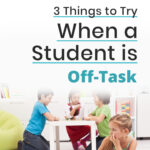
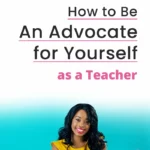
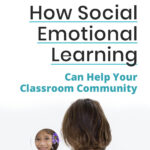

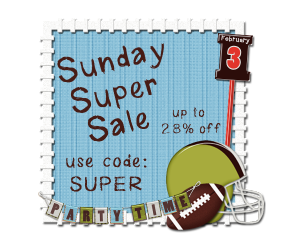
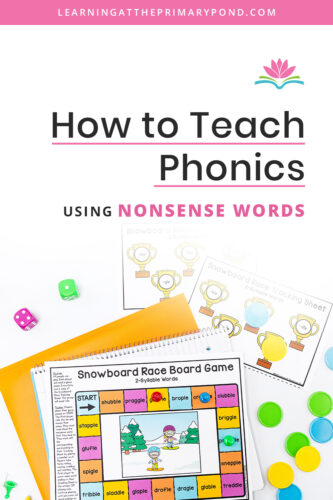






How do I download the articles so they are printer-ready?
There’s a little “Printer Friendly Version” icon at the bottom of the post that you can click. 🙂
Alison